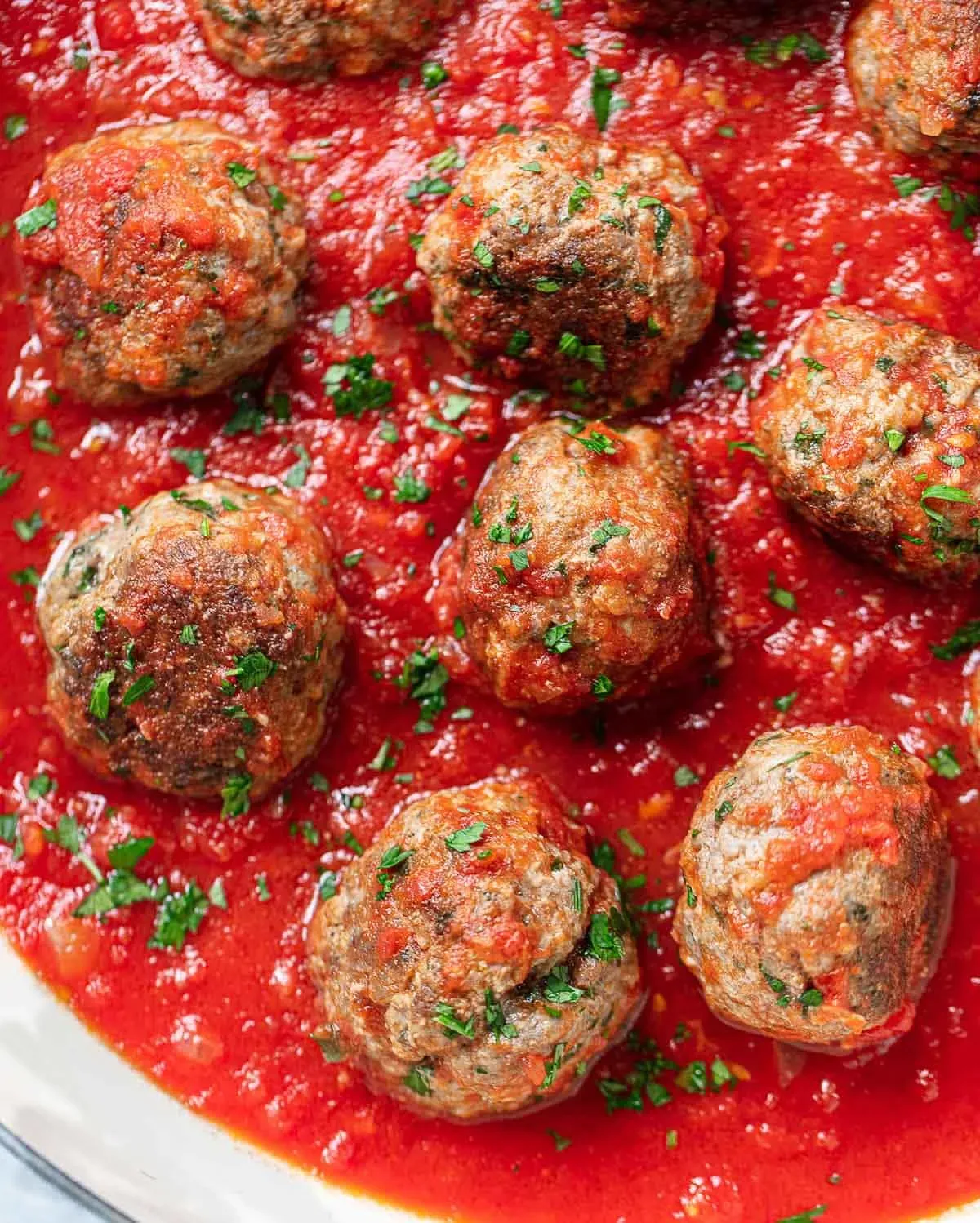Table of Contents
Everyone seems to have a strong opinion on what makes the perfect meatball. Maybe it's the ones your nonna used to make, or the kind you remember from a favorite old-school Italian-American joint. That quest for the truly tender, undeniably juicy, flavorful meatball ends here. Forget dry, dense little pucks. We're talking about the kind that practically melt in your mouth, swimming in a rich marinara sauce. This isn't some fussy, complicated restaurant trick; it's the straightforward, reliable technique for a truly classic italian meatballs recipe.
Mastering the Classic Italian Meatballs Recipe: Ingredients

Mastering the Classic Italian Meatballs Recipe: Ingredients
Alright, let's talk about what actually goes into these little flavor bombs. You might think it's just meat and breadcrumbs, but the magic is in the details. First off, the meat mix is key. Most folks swear by a blend of ground beef and pork, usually equal parts. Beef gives you that classic, savory base, while pork adds moisture and richness. Some purists even throw in a bit of ground veal for extra tenderness, but honestly, beef and pork work just fine for a killer classic. The real secret weapon, though? It's not some fancy spice blend or obscure cheese. It's the breadcrumbs.
Crafting Your Tender Classic Italian Meatballs

Crafting Your Tender Classic Italian Meatballs
now that you've got your perfect blend of meats and that crucial panade (that's the milk-soaked breadcrumb mixture, remember?), it's time for the hands-on part of Crafting Your Tender Classic Italian Meatballs. This is where many people mess up. You see, the goal isn't to knead this like bread dough. You want to mix everything together gently. Get your hands in there, sure, but think of it more like folding or lightly combining. Overworking the meat develops gluten and makes for tough, rubbery meatballs. Nobody wants that. Just mix until everything is incorporated – the meat, the panade, the eggs, the cheese, the garlic, salt, and pepper. Don't mash or compress it.
Tips and Tricks for Your Classic Italian Meatballs

Tips and Tricks for Your Classic Italian Meatballs
Don't Skip the Test Meatball
seriously, this is non-negotiable. You've got your mix, it looks good, smells good, but how do you know it tastes good? You fry up a tiny little test patty. Just pinch off about a tablespoon of the mixture, flatten it slightly, and cook it in a small pan until it's done. Taste it. Is it seasoned properly? Does it need more salt? A little more pepper? Maybe a pinch of red pepper flakes if you like a kick? Adjust the main batch *before* you roll all 16 meatballs. It's a few minutes of effort that prevents a whole batch of bland disappointment. Trust me on this; it’s the pro move.
Shaping Matters (But Don't Obsess)
When it comes to shaping, aim for consistency, not perfection. You want them roughly the same size so they cook evenly. A standard ice cream scoop or a large spoon works well for portioning. Roll them gently between your palms until they're roundish. Don't squeeze them into dense little rocks. A light touch is key. If the mixture feels too sticky, wet your hands slightly. Some folks like them small, others prefer them golf-ball size. The larger they are, the longer they'll take to cook through in the sauce, which can be a good thing – more time to soak up flavor. Just pick a size and stick with it for the batch.
- Use room temperature ingredients for easier mixing.
- Don't overmix the meat; handle it gently.
- Fry a test patty to check seasoning before shaping the batch.
- Wet your hands if the mixture is too sticky when rolling.
- Aim for consistent size for even cooking.
Serving and Storing Your Delicious Meatballs

Serving and Storing Your Delicious Meatballs
so you've rolled these beauties and maybe fried up that test patty. Now comes the best part: getting them ready to eat and making sure you can enjoy them later. The classic move is to gently drop your uncooked meatballs into a simmering pot of your favorite marinara sauce. Let them cook low and slow in the sauce for at least 30 minutes, maybe even an hour or more. This way, they absorb all that tomato goodness and stay incredibly moist. Don't overcrowd the pot; cook them in batches if needed. They're perfect served over spaghetti, tucked into a hero roll with melty cheese, or just enjoyed straight from the pot with a hunk of crusty bread. If you have leftovers (a rare occurrence in my house, frankly), they keep well in the fridge for 3-4 days, submerged in sauce. For longer storage, let them cool completely in the sauce, then pack them into airtight containers or freezer bags. They freeze beautifully for up to two months. Just thaw them in the fridge overnight and reheat gently in sauce on the stove.
Storing Your Classic Italian Meatballs
- Refrigerate leftovers submerged in sauce for 3-4 days.
- Freeze cooked meatballs in sauce in airtight containers or bags for up to 2 months.
- Cool completely before freezing.
- Thaw frozen meatballs in the refrigerator.
- Reheat gently on the stovetop in sauce.
Your Meatball Triumph
So there you have it. The steps laid out are simple, the ingredients straightforward. What you end up with are not just meatballs, but tender, juicy spheres of comfort that hold up beautifully whether simmered for hours or baked to a perfect brown. This classic italian meatballs recipe is a reliable standard, proof that sometimes the best things in life (and on your plate) don't require unnecessary complexity. Make a batch, serve them how you like, and see for yourself.